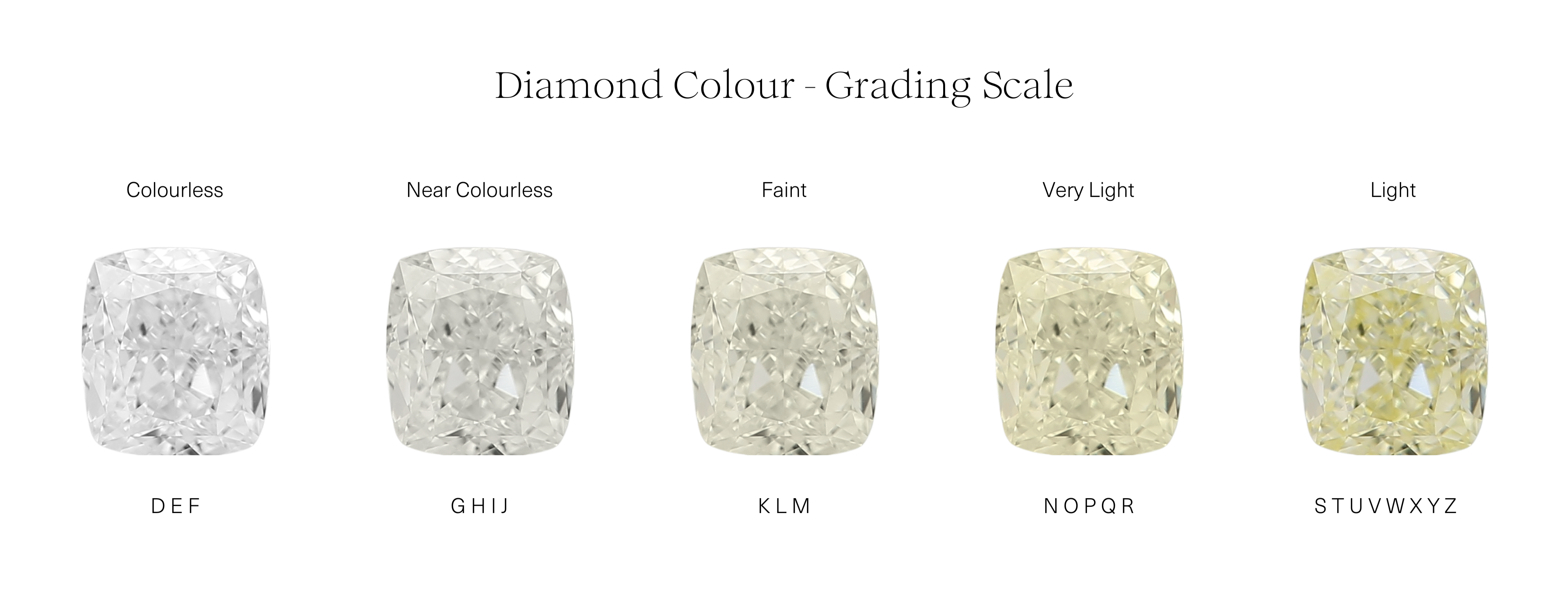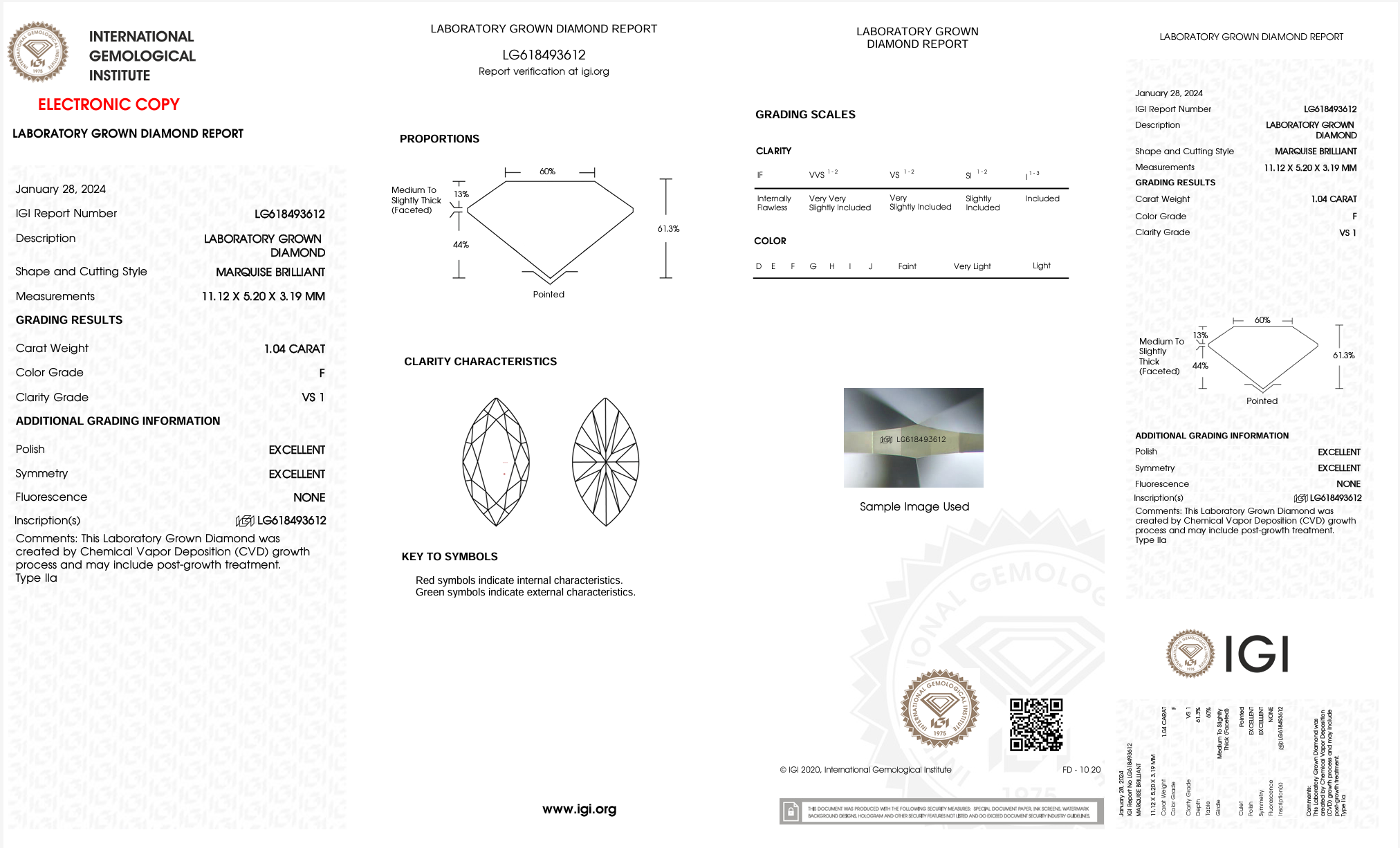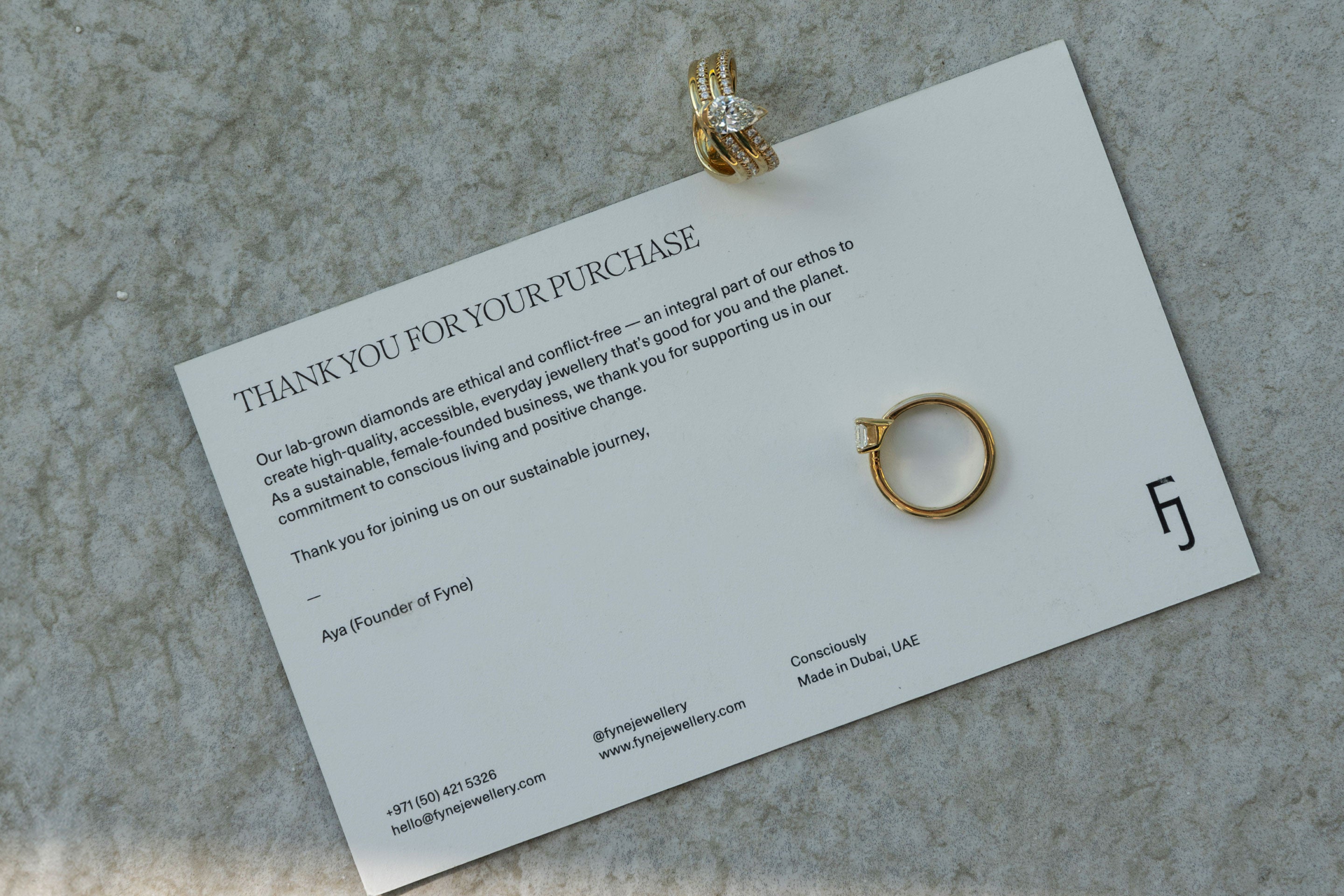Diamonds make up a good part of the jewellery industry, captivating buyers with their brilliance and beauty. But what truly makes one diamond better than another? Understanding the intricate world of diamond quality is essential to make your choice.
That’s where the esteemed GIA diamond grading scale comes in, which assesses diamond characteristics through the four C’s: cut, clarity, colour, and carat weight. Once armed with this knowledge, you’ll be ready to select the best diamonds that not only dazzle but also reflect your unique style.
Understanding Diamond Quality
Diamonds are truly unique, varying in size, shape, colour, and internal diamond characteristics. To navigate this diverse world, jewellery professionals rely on a standardised diamond grading chart established by the GIA (Gemologist Institute of America) in the 1950s.
This system evaluates the quality of diamonds based on four key factors known as the four C’s: cut, clarity, colour, and carat weight. Together, these elements provide a comprehensive picture of a diamond’s quality and value. Understanding this diamond grading system is crucial for anyone looking to purchase a lab-grown diamond, as it enables you to make an informed choice and determine the best quality diamonds for your style.
Diamond Grading Scales
All polished diamonds hold value, which is influenced by a variety of factors, with rarity playing a significant role. Certain diamond ratings make the gems more unique — and therefore more valuable — than others.
To assess these qualities, the GIA developed a widely accepted set of standards known as diamond grading scales or a diamond quality chart. These scales evaluate each of the four C’s, which directly impact a diamond’s worth. This universal language allows consumers to understand precisely what they are purchasing, allowing them to make informed decisions.
1. Cut
While many people think of cut as the diamond’s shape, it actually focuses on how the stone’s facets interact with light. The cut is, therefore, crucial to its overall brilliance, referring to how well the diamond’s proportions, symmetry, and polish are crafted.
A well-cut diamond will maximise its brightness, brilliance, and scintillation, having light expertly reflected and refracted through its surface. The diamond’s proportions determine how light performs once it enters the stone. For example, if it shines right through the crown and through the pavilion, the diamond looks darker and less desirable. The higher the cut grade, the brighter the diamond. Therefore, the best quality diamonds have different proportions and a good polish.

2. Clarity
Clarity is all about the natural imperfections, or inclusions, within a diamond that defines its unique character. These tiny flaws, like minerals or crystals, can influence how light travels through the stone. The fewer inclusions a diamond has, the clearer and more luminous it will appear.
While most diamonds have some inclusions (often invisible to the naked eye), they contribute to the stone’s individuality, much like our own unique traits. There’s a total of 11 diamond clarity grades on a scale from Flawless (FL) to Included (I1, I2, and I3), with higher grades signifying fewer visible imperfections and greater brilliance.
Did you know? The effect of a diamond characteristic on the clarity grade is based on its size, number, position, nature, and colour or relief.
Like the other C’s, the value of clarity relates directly to the stone’s rarity. Flawless diamonds are of the highest diamond quality, with no visible inclusions or blemishes when examined under a 10-power (10X) microscope. However, these diamonds are very rare — so rare that it’s almost impossible to come across one in the industry.

3. Colour
Colour is a crucial factor in determining a diamond’s beauty and value, and it’s often the first thing you notice. The ideal type of diamond is typically colourless, with the highest value attributed to those lacking in any hues. However, diamonds come in a spectrum of colours, ranging from D (colourless) to Z (noticeable colour) on the diamond grading chart, each grade impacting the stone’s appearance. From subtle tints to vivid hues like pink, blue, or yellow, they can also be highly sought after.
These colour differences do affect the stone’s value: two diamonds of the same weight, clarity, and cut can differ in value simply because of their colour alone.

4. Carat
Lastly, the carat measures a diamond’s weight and is a significant factor in its value. Larger diamonds are rarer and generally more expensive, making carat weight a significant consideration for buyers. However, the carat alone doesn’t determine a diamond’s overall appeal; its true worth also depends on its cut, colour, and clarity. Therefore, use the carat as a size indication rather than its value!
Fun fact: The largest lab-grown diamond was graded by IGI in Mumbai this year (2024): a 75.33-carat square-emerald cut diamond grown using CDV (chemical vapour deposition). It was named the ‘Celebration of India’.
Diamond Grading Report vs Diamond Certificate: Differences
Gemologists look at the four C's to grade these diamonds on their overall quality and value. After assessing these factors, the findings are then documented in a diamond grading report. This document outlines the diamond’s quality and is typically issued by a reputable gemologist or third-party labs like GIA or IGI.
In contrast, a diamond certificate not only includes the grading details but also offers additional information, such as the diamond’s origin and its warranty. While it provides similar data, a diamond certificate may also feature unique benefits, such as a Certified Carbon Neutral stamp, along with a Lifetime Warranty and Diamond Value Guarantee, adding extra assurance for buyers.

Choosing the Right Diamond
The idea of purchasing a diamond may seem daunting, but through this diamond grading system, you have several resources to help you select the highest quality diamond that suits your personal style. Consider what resonates with your values and lifestyle to find the perfect diamond that’s as meaningful as it’s beautiful.
At Fyne, we also give our clients the option of using carbon-neutral certified lab diamonds — going a step further to ensure sustainability measures. Because it's a relatively new industry, the technology constantly evolves and changes to make way for even better practices. Therefore, lab-grown diamonds offer a progressive and innovative alternative to the traditional market.
So, knowledge is your greatest power in the dazzling world of diamonds. By understanding the four C’s — cut, colour, clarity, and carat weight — you empower yourself to make an informed choice that reflects your personal style and values. Whether you opt for a detailed diamond grading report or a comprehensive certificate, having diamond ratings explained on paper ensures your investment is sound and your gem truly exceptional.
FAQs
What are GIA-certified diamonds?
These certified diamonds have undergone a meticulous grading process, which was initially developed by the Gemologist Institute of America (GIA). The grading is mostly done by a GIA-certified gemologist, who then records a diamond’s quality in a certificate or report. GIA and IGI are the most respected diamond-grading institutes, which is why we only use GIA or IGI-graded diamonds in our jewellery.
What are the 4Cs of diamonds?
The 4Cs refer to cut, colour, clarity, and carat weight, which are key factors used to evaluate a diamond’s quality and value.
What’s the highest quality diamond?
The GIA Clarity Grading System grades diamonds, with the highest grade being Flawless (FL). These types of diamonds don’t have visible inclusions or blemishes when they’re examined under a 10-power (10x) magnification.
What are the best diamond grades?
Each of the four C’s has a ‘top’ grade that certifies the highest quality and value. However, they always depend on numerous things. According to the GIA diamond grading chart:
- The best diamond cut is ‘excellent’.
- The best diamond colour grade is ‘D’.
- Flawless is the best grade for clarity (no visible inclusions under 10x magnification).
- There’s no best grade for carat weight as it depends on the shape and the balance with the other diamond characteristics (cut, colour, and clarity).
What’s the lowest quality diamond?
I3 diamonds have the lowest clarity grade, which is a diamond with many inclusions that result in it being less sparkly and bright.
Are lab-grown diamonds graded differently than natural diamonds?
No. Lab-grown diamonds are graded using the same criteria as natural diamonds, including the 4Cs, ensuring that their quality can be compared on the same scale.
Why is a diamond certification important?
Certification provides that extra guarantee that a diamond has been evaluated by a professional gemologist, ensuring its quality and authenticity, which is crucial for making an informed purchase. At Fyne, we provide certificates for all our bridal jewellery, including engagement rings, eternity bands, diamond studs and tennis bracelets.




